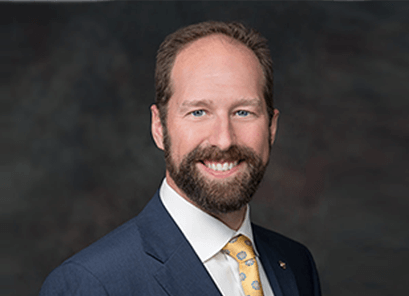Want to Deliver Massive Value? Here’s How
Micah shares a client story about using a simple, hand-drawn value-add to catch a critical error and deliver massive value.
6 min read

Financial Planner, CFP®
I hate to break it to you, but as an advisor, you know nothing that a client can’t find somewhere deep in a Google search.
Your clients could read the tax code; they could pull the OPM. They’re not going to, but you must remember they could do those things.
You set your knowledge apart from what your client gains through a Google search because you can offer customized, actionable advice in a way that they can understand—which is the foundation of delivering massive value.
Simply put, your ability to communicate your technical knowledge offers them value and makes you worth your fee.
What sets advisors who deliver massive value (DMV) apart from advisors who aren’t yet, is that DMV advisors realize how critical communication is for their client’s experience. Yes, your technical knowledge is essential, and you need that foundation. But your knowledge is useless to your clients if you can’t articulate it.
Universally, advisors who figure out how to communicate will get the most clients. In fact, according to the Pareto Principle, twenty percent of advisors who’ve mastered their client interactions will get eighty percent of the clients.
Those advisors who haven’t figured out how to communicate with their clients end up trolling social media, bellyaching that DMV advisors should care more about the technical bits and less about the people they serve.
Neglecting to care about the people advisors serve is a rookie move.
Here’s why:
Recently, prospective clients, Bob and Sue, stopped in to have me look over their retirement documents. They just wanted to check the right boxes in Bob’s federal retirement paperwork to get the most out of his retirement funds.
Bob and Sue were super excited because, as far as they could tell, their retirement would be a breeze. They proudly exclaimed that they didn’t think they’d need to touch their investments to bring in their goal income of $10,000 a month.
Naturally, I was excited for them, but as we talked, I realized that they were working with gross numbers, not net, and they had already started spending $10,000 a month in their minds.
As advisors, we all know there’s a massive difference between gross and net income, especially with federal pensions. Bob and Sue weren’t aware that taxes, health insurance, life insurance, potential long-term care, survivor benefits, etc., would be deducted from that gross $10,000. In reality, Bob and Sue could be netting as much as half what they projected.
Bob and Sue were intelligent, successful people. But they didn’t understand the nuances of financial planning—that’s why they were in my conference room. I could immediately tell Bob and Sue they were wrong—likely hurting egos and embarrassing them.
Or I could walk them through the process.
As a DMV advisor, I know that the problem isn’t that they made an error around their $10,000 gross income. The problem is that I have a client in my office with an egregious misunderstanding of their finances. My job is to bridge that gap between their understanding and my understanding.
I have two options: I could welcome them into my office and set them straight right away, or I could make a note on my homework sheet to address the issue in a way that helps them to see the problem.
Many advisors will just jump into the issue and “handle” it immediately. I prefer a softer approach and wait for the right time to bring it up. When the time was right, I explored these numbers with the client. I asked them if we could walk through those numbers together to ensure we’re all on the same page.
We started at a 10,000 ft view of their finances and zoomed in on the critical details. I carefully worked through their retirement income streams. I pulled out a pen and paper, and we started talking in round numbers, using easy math. We discussed how much they both had in retirement and how Bob’s pension would work one step at a time.

After we found his monthly pension, I pointed out that the IRS likes their gross income, but Bob doesn’t get his gross income in his paycheck every two weeks. He gets his net pay after deductions. Bob had a lightbulb moment, and it clicked for him that he won’t be earning that entire $10,000 each month; just like his current paycheck, his pension will also have deductions.
I didn’t make Bob feel bad for misunderstanding the numbers. Instead, I helped him see the error for himself.
We have a gap to fill for Bob and Sue to have the retirement income they want. The great news for Bob and Sue was that we caught their error before any of their paperwork was submitted, and together we can create a financial plan to help them reach their goals.
During this client interaction, I used a pen and paper to create a one-page financial plan that showed where their money was coming from and where their deductions were going. Bob and Sue left my conference room confident in how we reached the new numbers we found in their retirement plan.
Bob and Sue were very much a part of the planning experience, which is tremendous in building client/advisor relationships. They may not remember the exact math, but they’ll remember we worked together through each step on paper. And now they have a tangible explanation of what we found together that they can keep and refer to.
Many advisors get caught up in creating complicated value-adds, never realizing they can make one, as I did with Bob and Sue using a piece of paper and crayon. Sure, those complex programs are great, and they can offer massive value—I dumped tons of money on a custom CRM—but for years, our industry created visual aids by hand.
Often, these handmade representations I create with the client offer more on-the-spot value than any Excel printout ever could.
Happy Planning!
Popular Topics
Value Adds
If you are routinely providing clients with value adds in a consistent, efficient, and deliverable
Is That OK With You?
One of the most significant differences between ‘good’ advisors and rock-star level advisors is
Like Coke from a Coffee Mug: Run Your Best Client Meeting
Client meetings can be a dreaded part of a routine or you and your clients’ favorite part of your
Still Holding Out on Surge™? 2023 Could Be Your Year
Micah Shilanski, CFP®, busts myths and misconceptions surrounding Surge meetings and shows how
5 Questions Every Advisor Should Ask
Matthew Jarvis, CFP®, answers five essential questions every advisor should ask to transform
What You Should
READ NEXT
Stop Stressing About Raising Fees – We’ve Got You Covered
Raising fees can feel nerve-wracking—palms sweaty, mind racing, worrying if clients will walk away. But with the right approach, it’s an opportunity to strengthen relationships by clearly communicating the value you bring. That’s why we created a foolproof fee-increase letter to make these
Julie Bray Case Study
Micah Shilanski, CFP®, discovers the top 10 benefits of hiring a virtual assistant to enhance productivity, reduce costs, and boost employee happiness, making your business more efficient and
Prospecting Got You Down? Here’s How To Turn It Around
Rejection hurts, which is why so many advisors hide from prospecting by playing office. Micah Shilanski, CFP®, shares ways to adjust your mindset around
Start the change today!
Get our 3 most popular power sessions FREE. You and your team will learn about: Time Blocking, the One Page Financial Plan, and the “Buckets of Money” approach.




